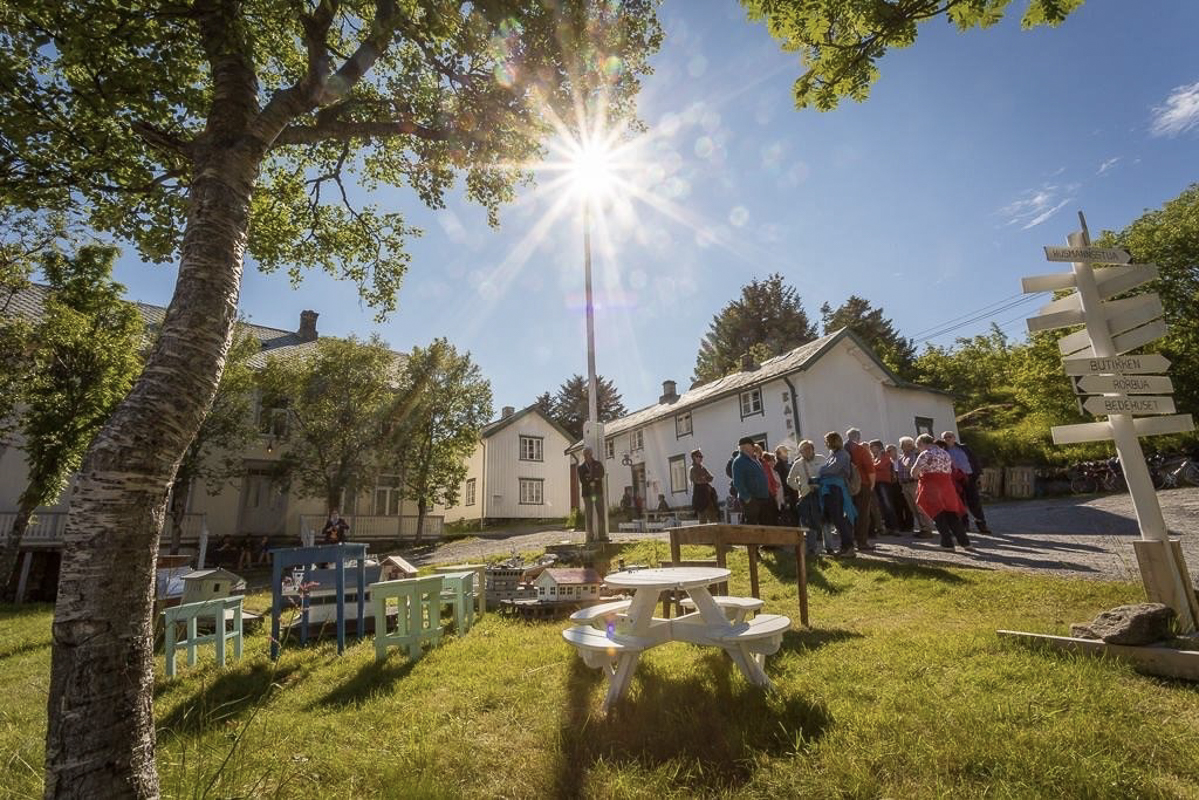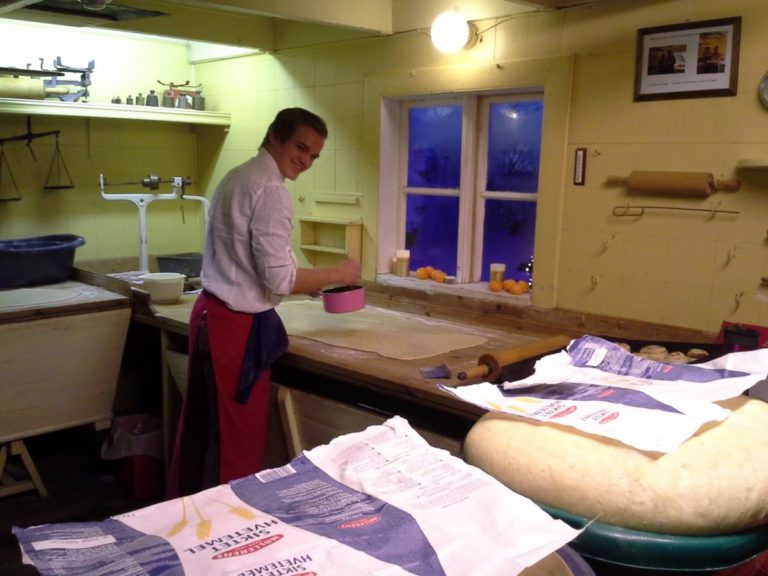A fishing village used to have an owner, and often still does. He owned the ground on which the fishing village stood, hired out rorbu cabins to the fishermen who had travelled there for the Lofoten Fishery, bought the fish that the fishermen were obliged to supply to him, made dried fish from it and then sold it, and he also imported essentials and luxury goods. All of a village owner’s power stemmed from his fishing village, and he was often described as the ‘king of the headland’. There are many villages in Lofoten, but Å is one of the most remote and the best preserved, and the entire village forms the Fishing Village Museum.
The village is a complete complex
The fishing village of Å has been owned by the Ellingsen family since 1842. The complex is largely unchanged from how it was during the owner’s heyday in the late 19th and early 20th centuries. The elegant mansion dates back to 1864, while two other beautiful white-painted houses were built in 1869 and 1875. Together they form a smart courtyard with two beautiful, historic gardens. A storehouse and a shop dating back to 1843 are also central parts of the complex. The rorbu cabins and fish processing facilities are scattered around the area: the salting plant is from 1927, the cowshed from 1885, the wharf from 1934, the cod-liver oil factory from 1850, and there is also a crofter’s cottage, smithy and outhouse. Six of the buildings are open to the public, and you are encouraged to go inside and learn what life was like in a fishing village.
Crofter’s moved their cottages for work
Crofters were people that rented the ground on which their home was built. They also rented small hayfields so that they could keep a few animals. Payment was generally in the form of labour provided to the village owner. The crofter’s cottage at Å was originally built in Gildeskål, and was moved to Å in 1925. Moving a timber house was common in those days, similar to the way we might move a prefabricated building nowadays. The kitchen was the biggest communal room, and it was always warm in there. The living room contains looms, since handicrafts could bring in extra income for the women.
Nordland boats are on display
The boathouse is one of the gems of the Norwegian Fishing Village Museum. It contains a wonderful collection of old Nordland boats, from the little four-oared boat which is rowed by two people, via the six-oared boat rowed by three people, to the eight-oared boat that needs four people to row it. There is also a converted Nordland boat with a motor, dating from the time motor power took over in 1915. It also contains an extensive range of fishing equipment, like the hand lines that have been used for thousands of years. There is a tanning vessel in which nets were soaked, an electric wheel for a hand line from the 1960s, and exhibitions about the whaling industry.
Folk legends are worthy of Horror films
During the days of the Lofoten Fishery, people would be risking their lives every day. So it’s not surprising that most people believed in the supernatural. The most ghastly of course, is the image of the ghost of the sea, the drowned fisherman who wanders eternally and appears to fishermen in peril. The king cod, a mutant cod with a deformed head, is hung up like a dried fish, and you can tell which way the wind will be blowing the next day by the direction its head is pointing. If you filled a tin plate with water and left it overnight, the air bubbles the next day would tell you where to look for fish.
Cod-liver oil is a multipurpose product
Cod-liver oil was used to make lamp oil and paint and to treat leather and skins. The building at the Norwegian Fishing Village Museum was constructed in 1850, but the original cod-liver oil factory itself is no longer there. However, a complete facility has been brought over here from Hopen on Austvågøya Island. In 1854, the pharmacist Peter Møller constructed a vessel with a double bottom and double sides. The space between the layers contained boiling water, and this allowed him to produce a mild-tasting cod-liver oil for medicinal purposes. The traditional way of producing cod liver oil was by floating, when cod livers were put into barrels for weeks and months, and the cod-liver oil would gradually rise to the top of the barrel. The museum will offer you a (relatively…) pleasant-tasting spoonful of its own medicinal cod-liver oil, with a guarantee that it is healthy. The museum also produces and sells traditional paint made with cod-liver oil, and this is still used on old houses along the coast.
Watch bakers at work at the over 170 year old bakery
The hundreds of Lofoten fishermen setting out from Å in rowing boats needed a lot of bread. The bakery dates back to 1844, and has a huge brick oven which can bake 100 loaves. The bakery still operates today, using birch wood to heat the oven for bread and cinnamon swirls in summer. The bakery acts as the museum’s cafe and is an exhibit in itself, as you can watch the bakers work.
Visiting the Norwegian Fishing Village Museum
Å is in the far west of Lofoten, at the end of the road, and you can get there by car or bus. The Lofoten Stockfish Museum is not far away, and we recommend that you combine a visit there with a visit to the Norwegian Fishing Village Museum. Don’t forget to stop for a coffee at the bakery!

Visit Lofoten
For all the information you need about visiting Lofoten, including the Norwegian Fishing Village Museum in Å, simply check out the Visit Lofoten webpage.















